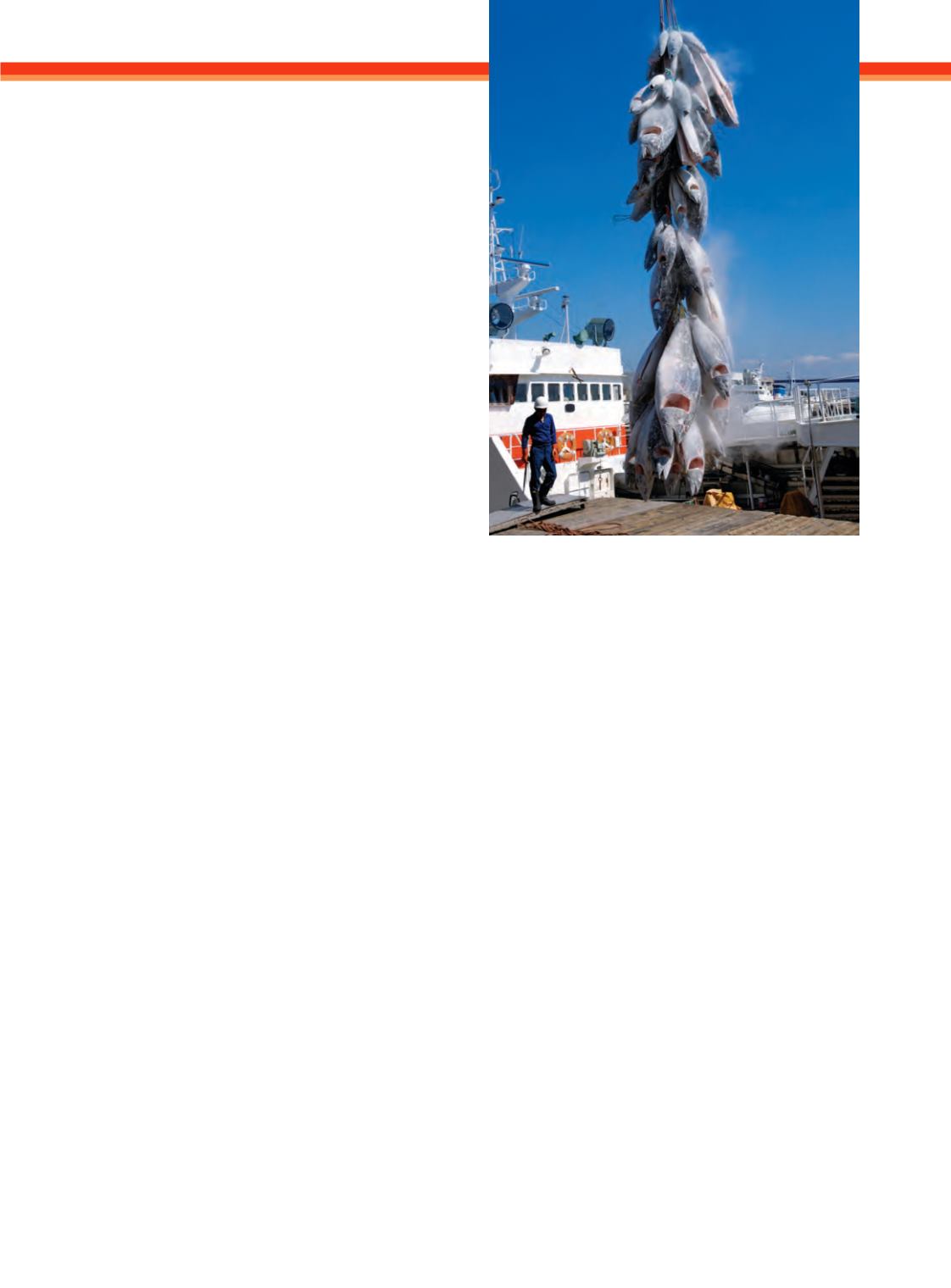

84
|
FALL 2016
as mackerel, sardines and anchovies — which are being
caught at massive rates and fed to farmed fish and land-
based livestock in the form of fishmeal and fish oil.
“Globally more than 90 percent of the forage fish that
are removed from the ocean are fed to other animals.
It’s an inefficient use of what we’re already removing,”
Shester said. The solution? We should eat many more
of the foraged fish ourselves. If we did so, Oceana
calculates that there would be about 400 million more
seafood meals available worldwide every year.
“The rest of the sustainable seafood world has gone
down this path of, ‘It’s OK if you feed them, as long as
you feed them less fish,’” Shester said, “but the problem
is whenever you feed an animal, you have to take into
account the full life cycle and the effect upstream — the
water and energy use and all that.”
As Shester sees it, the ocean is much more than a
source of food. “It provides air, it provides the weather,
it provides for amazing wildlife…,” he said. “So the
question we need to ask ourselves is: Do we want a
future where the ocean is feedlots or a food web?”
He believes the solution is seafood that doesn’t need
to be fed: forage fish, farmed bivalves (oysters, mussels,
clams, etc.) and more responsibly caught wild seafood.
When it comes to greenhouse gas emissions — a
piece of the environmental puzzle with a direct impact
on the ocean via acidification
2
— some studies show
that wild fish have one of the lowest carbon footprints
of any protein available.
“North American seine-caught sardines have half the
carbon footprint of organic lentils and about a quarter
of the footprint of tofu or peanut butter,” Shester said.
CONSUMER DISCONNECT AND FRAUD
On a macro level both Shester and Seafood Watch’s
Bigelow pointed to Americans’ lack of connection to
the source of their food and the resulting gap in basic
understanding. “Divers, surfers and costal residents
are some of our biggest supporters,” Bigelow said, “but
most other Americans have no real contact with the
ocean, so it’s difficult for them to imagine what a fish
farm is, let alone what sets apart the sustainable ones.”
Shester agreed. “We have a pretty strong disconnect
between what we eat and where it’s coming from,” he
said. “So the more you can become familiar with what
species you’re eating, what method was used to farm or
catch it, and who the fishers were, the better.”
Oceana is one of a number of groups that have
tested seafood in restaurants and grocery stores to
identify how often the species being sold is the one
actually appearing on consumers’ plates. The group
released a report in September 2016 that found that
of the of the 25,000 seafood samples it analyzed, 20
percent — one in five — were incorrectly labeled.
3
“You can walk into a store or restaurant and get
something other than what you’re buying ... but the
store owner or chef may have been lied to. It’s a
symptom of the larger lack of traceability,” Bigelow
said. And more important, fraud makes other
consumer decision-making moot.
“We’re very interested in figuring out the traceability
issue,” Voorhees said, “because the lack of it has the
real potential to undermine the work that we do
here [at Seafood Watch] in putting together these
recommendations.”
TRACEABILITY IN WILD SEAFOOD
When it comes to traceability in wild seafood, the
Marine Stewardship Council (MSC) oversees the
largest global effort to connect consumers with fish
that has been managed and caught responsibly.
4
“When you buy MSC-certified wild fish,” said John
Corsiglia, the organization’s U.S. media manager,
“you’re supporting fisherfolks who have gone through
an extensive evaluation to prove that the way they’re
fishing isn’t depleting fish stocks, and there’s good
government management of the fishery.” The group
uses a single, easy-to-recognize blue label, and it does
not rate fisheries against one another like Seafood
Watch does. But the organization makes a map
available on its website where a user can locate and
ISTOCKPHOTO.COM















